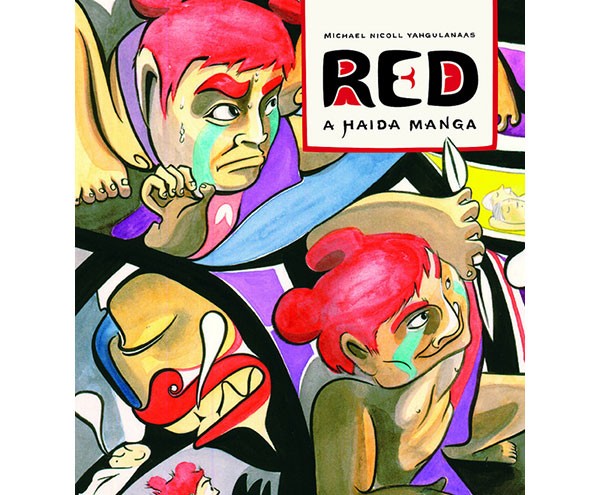
Michael Nicoll Yahgulanaas (Douglas & McIntyre, 2009)
With so much beautiful art and history behind Haida culture, it was refreshing to see it reflected in a new light. In Red: A Haida Manga, the traditional form of Haida art coalesces with Japanese influence and creates something that is current and new.
The book is short, and tells a historic (cautionary) story of revenge and war. Red loses his sister to raiders and spends the rest of his life building an army and weapons to pay back those who wronged him and return his sister. He is blinded by this rage and it turns out to be his downfall.
There is a poetic nature that flows throughout though, that permeates the quickness of the book. It reminds us of history and past atrocities, of the unnecessary excesses we go to in hopes of finding justice or revenge, and reflects back on our own apathetic nature. It was surprising for a book with so few words to have such a powerful message conveyed.
The art is fantastic: a blend of japanese and traditional Haida styles, done in watercolours, with sweeping black page breaks that create the “comic” panels. At the end of the book, the pages are all laid out and you can see that those sweeping page breaks make a piece of art in themselves, and that when taken as a whole, the book reads as one big piece of artwork; a tale told across one swath of imagery.
For what it set out to accomplish, Red: A Haida Manga is deeply profound and would make a great talking piece for anyone who enjoys looking back into the stories that shaped our histories.
***
For more information, visit the Douglas and McIntyre website.
**
Jeremy Senko is happily lost in the world of theoretical architecture and design. He is forever a student at heart, consistently reading, experiencing and learning about the world he inhabits. More specifically, he works as an Interior Designer in Vancouver and plays an active part in bettering the environments we live in.

